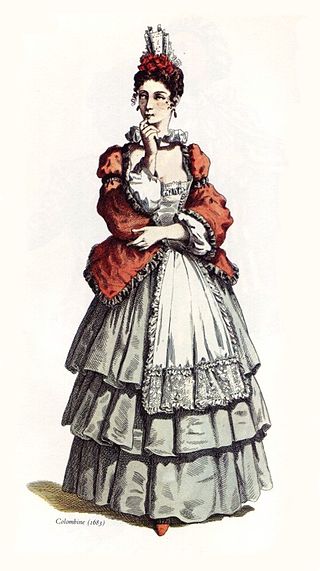
Columbina is a stock character in the commedia dell'arte. She is Harlequin's mistress, a comic servant playing the tricky slave type, and wife of Pierrot. Rudlin and Crick use the Italian spelling Colombina in Commedia dell'arte: A Handbook for Troupes.

Rafael Sabatini was an Italian-born British writer of romance and adventure novels.

François Alexandre Frédéric de La Rochefoucauld-Liancourt was a French social reformer.

André Marie Chénier was a French poet of Greek and Franco-Levantine origin, associated with the events of the French Revolution of which he was a victim. His sensual, emotive poetry marks him as one of the precursors of the Romantic movement. His career was brought to an abrupt end when he was guillotined for supposed "crimes against the state", just three days before the end of the Reign of Terror. Chénier's life has been the subject of Umberto Giordano's opera Andrea Chénier and other works of art.

Scaramouche or Scaramouch is a stock clown character of the 16th-century commedia dell'arte. The role combined characteristics of the Zanni (servant) and the Capitano, with some assortment of villainous traits. Usually attired in black Spanish dress and burlesquing a don, he was often beaten by Harlequin for his boasting and cowardice.

A swashbuckler is a genre of European adventure literature that focuses on a heroic protagonist stock character who is skilled in swordsmanship, acrobatics, guile and possesses chivalrous ideals. A "swashbuckler" protagonist is heroic, daring, and idealistic: he rescues damsels in distress, protects the downtrodden, and uses duels to defend his honor or that of a lady or to avenge a comrade.
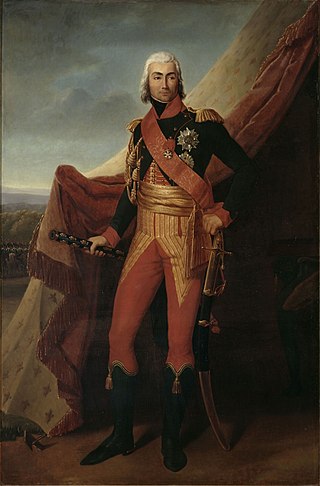
Jean-Baptiste Bessières, 1st Duke of Istria, was a French military commander and Marshal of the Empire who served during both the French Revolutionary Wars and the Napoleonic Wars. His younger brother, Bertrand, followed in his footsteps and eventually became a divisional general. Their cousin, Julien Bessières, also served Emperor Napoleon I as a diplomat and imperial official.

Laurent de Gouvion Saint-Cyr, 1st Marquis of Gouvion-Saint-Cyr was a French military commander in the French Revolutionary and Napoleonic Wars who rose to the rank of Marshal of the Empire. He is regarded as Napoleon's finest commander in defensive warfare.

Sentimental Education is a novel by Gustave Flaubert. The story focuses on the romantic life of a young man named Frédéric Moreau at the time of the French Revolution of 1848 and the founding of the Second French Empire. It describes Moreau's love for an older woman based on the wife of the music publisher Maurice Schlesinger, who is portrayed in the book as Jacques Arnoux. The novel's tone is by turns ironic and pessimistic; it occasionally lampoons French society. The main character often gives himself over to romantic flights of fancy.

Scaramouche is a 1952 romantic swashbuckler film starring Stewart Granger, Eleanor Parker, Janet Leigh, and Mel Ferrer. Filmed in Technicolor, the MGM production is loosely based on the 1921 novel Scaramouche by Rafael Sabatini as well as the 1923 film version starring Ramon Novarro. It was directed by George Sidney and produced by Carey Wilson from a screenplay by Ronald Millar and George Froeschel. The original music score was composed by Victor Young and the cinematography by Charles Rosher.

Le Bourgeois gentilhomme is a five-act comédie-ballet – a play intermingled with music, dance and singing – written by Molière, first presented on 14 October 1670 before the court of Louis XIV at the Château of Chambord by Molière's troupe of actors. Subsequent public performances were given at the theatre of the Palais-Royal beginning on 23 November 1670. The music was composed by Jean-Baptiste Lully, the choreography was by Pierre Beauchamp, the sets were by Carlo Vigarani and the costumes were done by the chevalier d’Arvieux.

The Earrings of Madame de… is a 1953 romantic drama film directed by Max Ophüls, adapted from Louise Lévêque de Vilmorin's 1951 novel by Ophüls, Marcel Archard and Annette Wadement. The film is considered a masterpiece of the 1950s French cinema. Andrew Sarris called it "the most perfect film ever made". Ophüls said the story's construction attracted him, stating "there is always the same axis around which the action continually turns like a carousel. A tiny, scarcely visible axis: a pair of earrings".
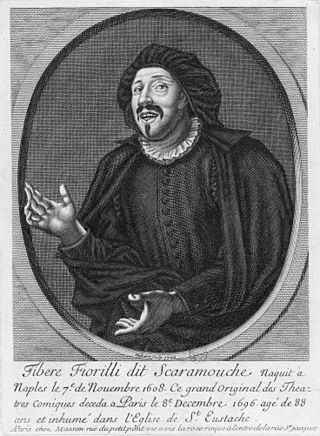
Tiberio Fiorilli, also spelled Fiorillo and Fiurelli was an Italian actor of commedia dell'arte known for developing the role of Scaramouche. He was especially popular in France, where he was the director of the troupe of the Comédie-Italienne, which shared with the troupe of his friend Molière at the theatre of the Petit-Bourbon, and the theatre of the Palais-Royal.
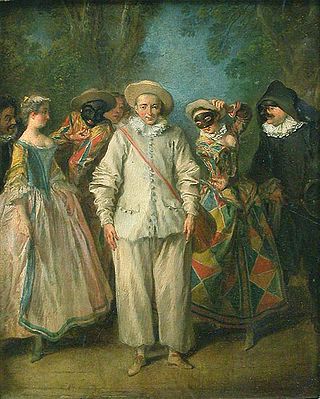
Comédie-Italienne or Théâtre-Italien are French names which have been used to refer to Italian-language theatre and opera when performed in France.
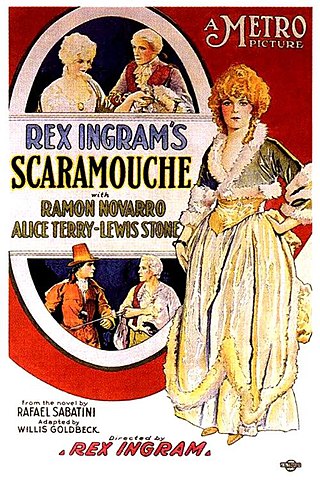
Scaramouche (1923) is a silent swashbuckler film based on the 1921 novel Scaramouche by Rafael Sabatini, directed by Rex Ingram, released by Metro Pictures, and starring Ramon Novarro, Alice Terry, Lewis Stone, and Lloyd Ingraham.

Jean Pierre de Batz, Baron de Sainte-Croix, known as the Baron de Batz or de Bance,, was a French royalist and businessman. He was born in Goutz-les-Tartas (Gers), and died in Chadieu, near Vic-le-Comte (Puy-de-Dôme).

Vilmorin is a French seed producer. The company has a long history in France, where it was family-controlled for almost two centuries, and today exists as a publicly traded company owned principally by agro-industrial cooperative Groupe Limagrain, the largest plant breeding and seed company in the European Union.
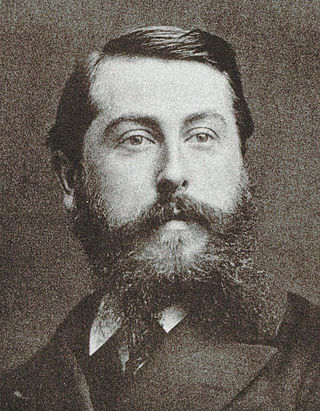
Le roi l'a dit is an opéra comique in three acts by Léo Delibes to a French libretto by Edmond Gondinet. It is a lively comedy, remarkably requiring 14 singers – six men and eight women. The libretto had first been offered in 1871 to Offenbach. the title also went through various permutations before settling on its final name. The 1885 revival brought further modifications to the libretto.

Julietta is a 1953 French romantic comedy film directed by Marc Allégret and starring Dany Robin, Jean Marais and Jeanne Moreau. The film was based on a novel of Louise de Vilmorin. In United Kingdom the film was known under the title "Julieta" (Mexico), "Biljett till Paris" (Sweden), "Il peccato di Giulietta" (Italy), "Ștrengărița" (Romania). It was shot at the Billancourt Studios with sets designed by the art director Jean d'Eaubonne.

Luigi Riccoboni was an Italian actor and writer on theatre, who was director of the Comédie-Italienne in Paris from 1716 to 1731. In France he was known as Louis Riccoboni and his stage name was Lélio.




















